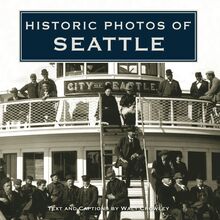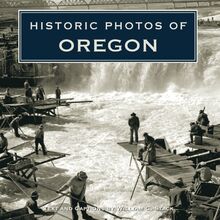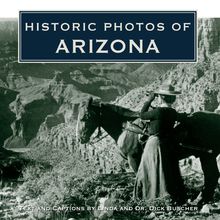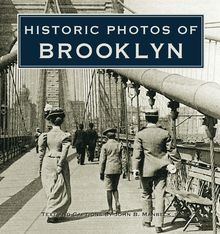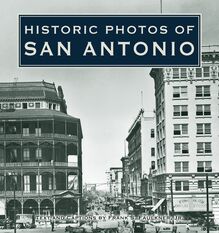Historic Photos of New York State , livre ebook
208
pages
English
Ebooks
2009
Vous pourrez modifier la taille du texte de cet ouvrage
Obtenez un accès à la bibliothèque pour le consulter en ligne En savoir plus
Découvre YouScribe et accède à tout notre catalogue !
Découvre YouScribe et accède à tout notre catalogue !
208
pages
English
Ebooks
2009
Vous pourrez modifier la taille du texte de cet ouvrage
Obtenez un accès à la bibliothèque pour le consulter en ligne En savoir plus
Publié par
Date de parution
01 juin 2009
Nombre de lectures
3
EAN13
9781618584144
Langue
English
Poids de l'ouvrage
23 Mo
This book, with 200 fascinating images from the past, covers more than a hundred years of New York State history. It starts with a daguerreotype of a doomed man clinging to a jammed log near the brink of Niagara Falls and ends with a race riot in Harlem in the 1960s. In between there is a kaleidoscopic review of New York State’s incredibly diverse and captivating history.
New York was born from a Dutch colony, grew up with English settlement, achieved independence at adolescence, and realized an adulthood of wealth and power after building the longest canal in the world. With the development of photography, the myriad experiences of New York State were recorded, and the best of these pictures have been selected and reproduced here to tell an engaging story. Subjects depicted include the Civil War, launch of the automobile, age of the industrialists, massive European immigration, the Pan-American Exposition, Prohibition, the Great Depression, the 1939 World’s Fair, the world wars, and much more.
Many famous New York photographers captured the special pictures that make the collection in this book outstanding. They include Mathew Brady, John Collier, Carl Dietz, Arnold Genthe, Lewis Wickes Hine, Lisette Model, Arthur Rothstein, Alfred Stieglitz, and others. It is rare to see a collection of historic images of such breadth and high quality. All of the photos are accompanied by informative text to enhance the experience.
Publié par
Date de parution
01 juin 2009
EAN13
9781618584144
Langue
English
Poids de l'ouvrage
23 Mo
HISTORIC PHOTOS OF
NEW YORK STATE
T EXT AND C APTIONS BY R ICHARD O. R EISEM
Lake Placid in the Adirondacks is a large, rectangular lake with two large islands, known as Buck and Moose, in the middle. At the south end of the lake is the charming village of Lake Placid, shown here in 1914. Today, deluxe summering sites surround the lake. One of them once belonged to singer Kate Smith, who popularized God Bless America.
HISTORIC PHOTOS OF
NEW YORK STATE
Turner Publishing Company
200 4th Avenue North Suite 950
Nashville, Tennessee 37219
(615) 255-2665
www.turnerpublishing.com
Historic Photos of New York State
Copyright 2009 Turner Publishing Company
All rights reserved.
This book or any part thereof may not be reproduced or transmitted in any form or by any means, electronic or mechanical, including photocopying, recording, or by any information storage and retrieval system, without permission in writing from the publisher.
Library of Congress Control Number: 2008910974
ISBN-13: 978-1-59652-522-1
Printed in China
09 10 11 12 13 14 15 16-0 9 8 7 6 5 4 3 2 1
C ONTENTS
A CKNOWLEDGMENTS
P REFACE
T HE E MPIRE S TATE (1850-1880)
A GE OF E XTRAVAGANCE (1881-1916)
W INE , W OMEN , W ANT, AND W AR (1917-1945)
A C HANGING W ORLD (1946-1967)
N OTES ON THE P HOTOGRAPHS
Storm clouds loom ominously over Niagara Falls in 1911. Sightseeing bulwarks are visible at the American Falls at lower left, with densely vegetated Goat Island situated above, another observation point that separates the two falls. A steamboat taking visitors toward the Canadian Falls is just visible at center-right. The rising mists are formed by plunging water striking the water and rocks below at great speed and volume.
A CKNOWLEDGMENTS
This volume, Historic Photos of New York State , is the result of the cooperation and efforts of many individuals and organizations. It is with great thanks that we acknowledge the valuable contribution of the following for their generous support:
Library of Congress
National Archives and Records Administration
New York State Archives
Thomas Cox Collection
We would also like to thank the following individuals for valuable contributions and assistance in making this work possible:
Ralph Amdursky, Tamarack, Florida
Larry Barnes, City Historian, Batavia, New York
Sam Campanaro, Rochester, New York
Susan L. Conklin, Genesee County Historian, Batavia, New York
Grace Good, Chesterfield Town Historian, Keeseville, New York
Josef Johns, Rochester, New York
Sandra Maceyka, Johnstown, New York
Randi Minetor, Rochester, New York
David Minor, Pittsford, New York
With the exception of touching up image imperfections that have accrued with the passage of time and cropping where necessary, no changes have been made. The focus and clarity of many images is limited by the technology and the ability of the photographer at the time they were recorded.
P REFACE
New York is unique among the thirteen American colonies for having been a colony of two European countries, namely, the Netherlands and England. From 1609 to 1664, it was a Dutch colony called New Netherland. On August 29, 1664, New Netherland became New York. The history of New York, therefore, combines those two quite different cultures, and their impact is still evident today.
In 1609, the famous explorer Henry Hudson sailed from Amsterdam on behalf of the Dutch East India Company, in search of a northwest passage to Asia, which, if found, would be of great benefit to the Dutch trading company. Hudson sailed his ship, the Half Moon , up the deep, broad river that would later be named for him, riding the incoming ocean tide. But the tide stopped at a point that is now called Albany. From there on northwest, the river was not navigable.
All was not lost, however. Hudson claimed the river and the surrounding territory for the Netherlands, which set up a manorial system of colonization in America. This system established patroonships, which were giant private estates owned and managed by patroons. One of the first patroonships was that of Kiliaen Van Rensselaer, which covered a staggering more than one million acres. All of the farms, villages, and hamlets that formed in that enormous acreage reported to Van Rensselaer.
By the early 1660s, English colonies in America were seeking to expand their territories, and England s king, Charles II, gave his brother, James, the Duke of York and Albany, a grant to an area that included a good portion of New Netherland. The duke formed an invasion fleet, and the Dutch, with totally inadequate armed forces, surrendered at New Amsterdam. The duke renamed the city, New York.
Dutch ways, however, persisted after the English takeover. Today, Albany, the capital of New York State, still displays more historic Dutch architecture than anywhere else in the country. Dutch words have contributed to American English, including Santa Claus, sleigh, cookie, cole slaw, waffle, poppycock, dumb (for stupid), and many more. Place names to this day also preserve their Dutch originals, like Catskill, Rensselaer, Amsterdam, Rotterdam, and Staatsburg.
Although the Dutch extended their influence to the west along the Mohawk River, the English regarded western expansion seriously. France, with a colony in Canada, looked equally seriously at expansion into New York. A series of wars with the French resulted in a firm British hold of the area now defined as New York State. After the Revolutionary War, a number of people in the new State of New York began to think about increased settlement of New York s heartland with its rich natural resources. The largest obstacles were the coastal mountain ranges and the dense forests beyond, which made travel to the interior difficult.
New York Governor DeWitt Clinton and others proposed a canal through the only relatively easy passageway, the Mohawk River Valley. The river itself was, for the most part, not navigable, but a canal with locks to overcome the changing elevation of the landscape could provide a smooth water highway across the entire state to Lake Erie. The idea of the Erie Canal was born. Without a penny of support from the federal government, which scoffed at the plan, it became totally a state project. No other government project, state or federal, had a more profound influence on our country.
The Erie Canal, built between 1817 and 1825, focused economic growth in New York State rather than in Canada, which bordered the navigable St. Lawrence River and Lake Ontario. The canal overcame prodigious obstacles to become a masterpiece of construction. It created the science of engineering in the U.S., which led to New York s predominance in the Industrial Revolution. And it transformed New York from a wilderness into the agricultural, industrial, commercial, and financial center of the country in the nineteenth century.
The enormous success of the Erie Canal led to the construction of a number of lateral canals--six of them in the first decade after the completion of the Erie and another four soon after. The Champlain and Oswego canals ran northward, and the others ran to the south, connecting vast parts of New York to the Erie Canal. By 1877, the New York canal system, which was the largest in the world, had an impressive 907 miles of canals with 565 locks.
The first U.S. president from New York State was Martin Van Buren. He became the eighth president and served from 1837 through 1841.
By 1850, where this book begins, photography existed, but it was practiced by the very few who learned its complex and cumbersome procedures. Early photographs in this book are daguerreotypes and wet glass-plates created by skilled craftsmen. Then in 1880, George Eastman in Rochester, New York, invented roll film, sheet film, and simple cameras. It is these photographs, made almost exclusively on Kodak film, that fill the following pages. The pictures are presented in chronological order of their being made, even though photos may contain subject material from an earlier time. Our text history of New York State also continues in the chapter introductions and photo captions. It is, as we hope you will find, a fascinating story.
- Richard O. Reisem
Frederick Law Olmsted, Sr. (1822-1903), America s preeminent landscape architect, designed many parks and city boulevards, but his most famous is New York City s Central Park, which he created beginning in 1856. This 1904 image shows the lake, near the south end of the 843-acre reserve. To this day, it is a popular place to rent a rowboat. Olmsted s purpose in park design was to provide the illusion of wilderness and peace in the midst of an urban environment.
T HE E MPIRE S TATE
(1850-1880)
In a speech to the New York State legislature, DeWitt Clinton said, The canal, in reaching out to the Great Lakes, would pass through the most fertile country in the universe and would convey more riches on its waters than any other canal in the world. It remains for a free state to erect a work more stupendous, more magnificent, and more beneficial than has hitherto been achieved by the human race. Indeed, the Erie Canal created all that and more. New York City soared to become the leading center of transcontinental shipping and climbed to preeminence in communications, finance, law, population, and publishing. The western wilderness of New York became the most productive area in America. Vast forests yielded superior lumber, and the earth was mined for many riches. Wheat and other grains, fruits and vegetables, meat and dairy products all flourished.
Industrial growth was phenomenal. America s big guns were made in Watervliet, and Remington rifles and typewriters in Ilion. Men wore collars, cuffs, and shirts from Troy. Knitting mills in Cohoes and Utica clothed a worldwide population. Corn was grown in the Mohawk Valley to make brooms to sweep the world s carpets produced in Amsterdam. The best cheese came from Herkimer County. People dined elegantly



